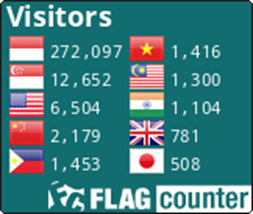Determinants of e-Money User Behavior Based on the Unified Theory of Acceptance and Use of Technology (UTAUT) 2 Model Mediated by Behavioral Intentions
DOI:
https://doi.org/10.26905/jbm.v11i1.12841Abstract
This study aimed to investigate the factors influencing UTAUT 2-based e-money user behavior, mediated by behavioral intentions. Data were collected through online questionnaires distributed via Google Forms. The research variables comprised performance expectancy, effort expectancy, social influence, facilitating conditions, hedonic motivation, price value, and habit as independent variables, with user behavior as the dependent variable and behavioral intention as a mediating variable. Participants were selected using purposive sampling techniques. Data analysis was conducted using Structural Equation Modeling-Partial Least Squares (SEM-PLS) with SmartPLS3 software. Hypothesis testing revealed that performance expectancy, effort expectancy, social influence, facilitating conditions, hedonic motivation, and price value did not significantly influence e-money usage intention. Additionally, facilitating conditions did not significantly impact e-money user behavior. However, habit was found to significantly influence both intention to use and behavior of e-money users. Furthermore, the intention to use e-money mediated the relationship between performance expectancy, effort expectancy, social influence, facilitating conditions, hedonic motivation, price value, habit, and user behaviorDownloads
References
Afiana, F. N., Subarkah, P., & Hidayat, A. K. (2019). Analisis Perbandingan Metode TAM dan Metode UTAUT 2 Dalam Mengukur Kesuksesan Penerapan SIMRS Pada Rumah Sakit Wijaya DKT Purwokerto. Jurnal MATRIK, 19(1), 17–26. https://doi.org/https://doi.org/10.30812/matrik.v19i1.432
Ahdiat, A. (2023, May 7). Tren Belanja Pakai Uang Elektronik Tumbuh 1.000% dalam 5 Tahun Terakhir. Databoks. https://databoks.katadata.co.id/datapublish/2023/07/05/tren-belanja-pakai-uang-elektronik-tumbuh-1000-dalam-5-tahun-terakhir
Ajzen, I., & Fishbein, M. (1977). Attitude-Behavior Relations: A Theoretical Analysis and Review of Empirical Research. Psychological Bulletin, 85(5), 888–918. https://psycnet.apa.org/record/1978-20968-001
Amrullah, A., & Priyono, A. (2018). Integrasi Aspek Risiko dalam Model Unified Theory Of Acceptance And Use Of Technology Untuk Menganalisis Penerimaan Teknologi Go-Ride. MIX: Jurnal Ilmiah Manajemen, VIII(1), 33–49. https://doi.org/dx.doi.org/10.22441/mix.2018.v8i1.003
Aulia Mutiara Hatia Putri. (2022, November 25). Uang Kertas Makin Tak Laku, Transaksi Elektronik Melesat 33%. CNBC Indonesia A Transmedia Company. https://www.cnbcindonesia.com/tech/20221125103811-37-391166/
Bashir, N. A. A. (2020). Penerapan Model UTAUT 2 Untuk Mengetahui Faktor-Faktor yang Memengaruhi Penggunaan SIORTU. ELINVO(Electronics, Informatics, and Vocational Education, 5(1), 42–51. https://doi.org/https://doi.org/10.21831/elinvo.v5i1.30636
Brown, S. A., & Venkatesh, V. (2005). Model of adoption of technology in households: A baseline model test and extension incorporating household life cycle. MIS Quarterly: Management Information Systems, 29(3), 399–426. https://www.researchgate.net/publication/220260199_Model_of_Adoption_of_Technology_in_Households_A_Baseline_Model_Test_and_Extension_Incorporating_Household_Life_Cycle
Chin, W. W., & Marcoulides, G. (1998). The Partial Least Squares Approach to Structural Equation Modeling. Advances in Hospitality and Leisure, 8(2). https://www.researchgate.net/publication/311766005_The_Partial_Least_Squares_Approach_to_Structural_Equation_Modeling
Damayanti, S. L., Yani, Y., Asnaini, A., & Afrianty, N. (2021). Minat Menggunakan E-Wallet pada Generasi Milenial dengan Pendekatan UTAUT (Unified Theory of Acceptance Use of Technology). Baabu Al Ilmi, 6(1). https://doi.org/http://dx.doi.org/10.29300/ba.v6i1.3988
Davis, F. D. (1989). Perceived Usefulness, Perceived Ease of Use, and User Acceptance of Information Technology. MIS Quarterly: Management Information Systems, 13(3), 319–340. https://www.jstor.org/stable/249008
Desvira, N. S., & Aransyah, M. F. (2023). Analysis of Factors Influencing Interest and Behavior in Using ShopeePay Features Using the Unified Theory of Acceptance and Use of Technology (UTAUT2) Model. Jurnal Sisfokom (Sistem Informasi Dan Komputer), 12(2), 178–191. https://doi.org/10.32736/sisfokom.v12i2.1594
Febriani, N. K. D., Utami, N. W., & Putri, I. G. A. P. D. (2023). Analisis Behavioral Intention dan Use Behavior Quick Response Code Indonesian Standard (QRIS) Pada UMKM Dengan Metode UTAUT 2 di Kota Denpasar. Jurnal Ilmiah Teknologi Informasi Asia, 17(1), 67–82. https://doi.org/https://doi.org/10.32815/jitika.v17i1.890.
Febriaty, H. (2019). Pengaruh Sistem Pembayaran Non Tunai Dalam Era Digital Terhadap Tingkat Pertumbuhan Ekonomi Indonesia. Festival Riset Ilmiah Manajemen & Akuntansi. https://doi.org/https://doi.org/10.55916/frima.v0i2.47
Hartono, J., & Abdillah, W. (2014). Konsep dan Aplikasi PLS untuk Penelitian Empiris. BPFE.
Indah, M., & Agustin, H. (2019). Penerapan Model UTAUT (Unified Theory of Acceptance and Use of Technology) Uuntuk Memahami Niat dan Perilaku Aktual Pengguna Go Pay Di Kota Padang. Jurnal Eksplorasi Akuntansi, 1(4), 1949–1967. https://doi.org/http://jea.ppj.unp.ac.id/index.php/jea/issue/view/16
Downloads
Published
How to Cite
Issue
Section
License
Authors who publish with this journal agree to the following terms:
(1) Copyright of the published articles will be transferred to the journal as the publisher of the manuscripts. Therefore, the author confirms that the copyright has been managed by the journal.
(2) Publisher of Jurnal Bisnis dan Manajemen is University of Merdeka Malang.
(3) The copyright follows Creative Commons Attribution–ShareAlike License (CC BY SA): This license allows to Share — copy and redistribute the material in any medium or format, Adapt — remix, transform, and build upon the material, for any purpose, even commercially.














